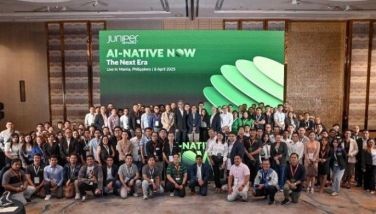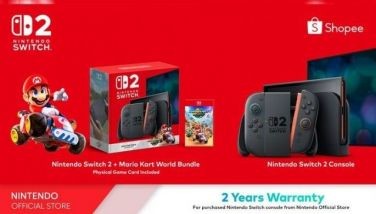Team America
For jazz enthusiasts, it’s the equivalent of the dream combo: Bird on alto sax, Miles on trumpet, Bill Evans on piano, Charles Mingus on bass, Duke Ellington conducting the whole thing.
For rock fans, it’s maybe like having Jimi Hendrix, John Lennon John Bonham, Kurt Cobain and Amy Winehouse, all jamming together in the same room.
That’s the Dream Team, America’s first “professional†US Olympic basketball team that played in the Barcelona Games of 1992. And how they came together, and held together, is the subject of Jack McCallum’s fascinating history.
They took America’s game to the world stage in a blatant display of overwhelming force, and the game was never the same after that summer. NBA pros became superstars and brand giants, and the world caught basketball fever like never before.
And you couldn’t find a more motley group of egos and talents in an Avengers movie.
Magic Johnson, Larry Bird, Michael Jordan (fresh after his first Bulls championship), Charles Barkley, Scottie Pippen, John Stockton, Patrick Ewing, Karl Malone, Clyde Drexler, David Robinson, Chris Mullin and Duke player Christian Laettner.
Wait… where’s Isiah Thomas? The problematic Detroit Pistons’ point guard was shut out of the Dream Team, and McCallum explores the various reasons why. Despite having Detroit coach Chuck Daly onboard to train the Olympic team, Thomas — his own top player — didn’t make the final cut. (Most indicators point to his piss-poor attitude and negative comments about Jordan, who for his part told Daly he “did not want to play†if Thomas was on the team.)
What emerges from Dream Team is a somewhat non-linear history of the events that made the team happen. Player profiles are loaded with great anecdotes and quotes. The veteran Sports Illustrated writer was a fly on the wall, and tells plenty of stories.
There’s one about Barkley, whose loose cannon behavior in the NBA — spitting at and punching unruly fans — made the USA Basketball committee think twice about adding him to the Olympic team roster. “The committee had to weigh his abilities… against the possibility that he could start World War III.†On the first day of practice, coach Daly wanted to impress upon his players how important US victory was. He tried using metaphor: he told them about two islands in Greece — Majorca and Minorca — the first “a much-desired destination, the kind of place Dream Teamers would take their wives and girlfriendsâ€; the second “a dark and dismal place†with a high suicide rate. “If we lose in Barcelona, we won’t get beyond Minorca.â€
Barkley piped up: “Coach, we ain’t going to no mother******’ Minorca.â€
The book is populated with characters that would fit in an Elmore Leonard novel. There’s Boris Stankovic, the FIBA representative (and former meat inspector) from Yugoslavia who got the bright idea of allowing pros to play in the Olympic basketball games. Before, it had been restricted to college players. Why not pit the world’s best against America’s best? Before you know it, the US Olympic roster was cleansed of college talent and packed with NBA might — only Christian Laettner, a Duke player, was allowed to participate, almost like window-dressing.
In the Olympic pre-games, blowouts became routine, the US averaging 51-point leads. Other teams were starstruck, like Cuba’s national team that pestered US players during practice for photo ops and later got humiliated on the court, or those who kept bugging Magic for a souvenir jersey. Others were gaga, like an Argentina player who could only say, “I am so overwhelmed by joy†— after being crushed by 41 points. Team USA didn’t always savor these victories: “You have to remember that competition was their lifeblood, and this was not competition,†says one assistant coach.
It could get ugly, too — like Barkley elbowing an Angolan player in the very first Olympic game. But while some saw them as bullies, tromping over weaker countries, most treated the Dream Teamers like rock stars.
McCallum draws highly entertaining profiles of each member, until they start to resemble the crew in Ocean’s 12 (down to the high-stakes casino gambling and late-night clubbing in Monte Carlo). His breezy style might rub hardcore ball fans the wrong way, but with a few deft strokes, he makes even the basketball novice understand a team that could encompass personalities as far apart as Larry Bird and John Stockton. And there’s a lot of juice here as well: the rivalry between Pippen and Jordan, Drexler and Jordan, Isiah Thomas and Jordan; you see how hard it was to be Magic Johnson — poster star for HIV, with a megawatt personality that sometimes grated on players — leading his team in Barcelona.
Bird, typically, comes across as a crusty veteran, a “notorious trash-talker,†the “hick from French Lick†Indiana who lacerates the press and younger players with his bone-dry humor. Bird’s back was nearing retirement by 1992 when the team was assembled, but there was no question that he, Magic, and Michael Jordan were going to lead the team.
Johnson had his own battles — receiving an HIV-positive “death sentence†right before the selection, yet attending to his health with the same positivity that he applied to media and later business dealings (he’s now a half-billionaire sports franchise owner). The very fact of his post-HIV presence in the game brought out the worst in some players — some, like Drexler, feared an infection from his blood, or crabbed that players went too easy on Magic on the court. “You have to understand what was going on then,†Drexler says. “Everybody kept waiting for Magic to die.†As callous as that sounds (and Drexler has since denied, making the comment), this is what it was like for pro players facing off in real-life NBA match-ups.
Meanwhile, Jordan’s gambling — and its negative associations for NBA Enterprises and his many corporate endorsers — is touched upon in Monte Carlo, where the team touched down (ostensibly) to hold basketball practices.
They may have been a dream team, but these guys were no angels.
Still, like the Avengers coming together despite their many squabbles and differences (or perhaps like the Rolling Stones, still an effective machine onstage, despite decades of in-fighting), these guys showed how the best players in the world could become the best team in the world.
McCallum contrasts the fading glory of the old guard (Magic, Bird) with the ascendance of the new breed (Jordan, Ewing, Drexler, Malone). He gets pithy quotes, capturing how the teammates grew almost telepathic over that Olympic summer. (Stockton: “It was basketball poetry. There was no place you could throw the ball that was wrong.â€) And he intersperses “Where are they now?†chapters on each team member to bring us up to date.
Plus there’s a great bonus: McCallum writes a gripping play-by-play of a closed-door game that has become the stuff of sports legend: “The Greatest Game That Nobody Ever Saw†held in Stade Louis, Monte Carlo in July 1992, pitting Jordan’s ad hoc team (playing with Bird, Malone, Ewing, Pippen) against Magic’s (playing with Laettner, Barkley, Robinson, Mullin) in a pickup match. This was, literally, the world’s best players facing one another over one quarter period of basketball — not for any money or medals, just to prove who was the best. For that chapter alone, Dream Team is journalistic gold.
















